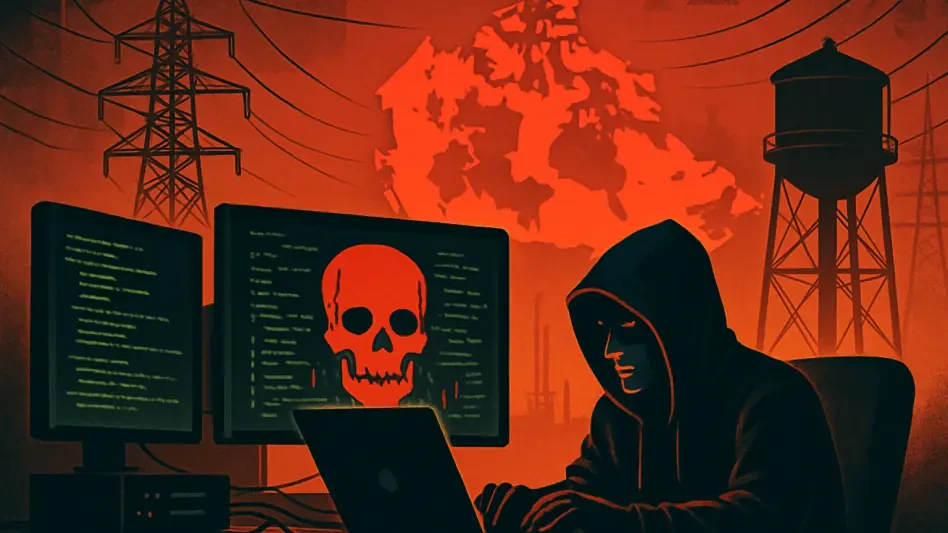An urgent cyber warning jolted Canada’s industrial base as hacktivists prodded exposed control systems, turning routine settings into weapons against water, energy, and agriculture operations across multiple provinces. The advisory arrived with unusual clarity: attackers were not cracking arcane zero-days, but simply walking through open doors left by default credentials, weak configurations, and internet-reachable devices that should have stayed off the public web.
Authorities described real manipulation, not just reconnaissance. Pressure valves at a water site shifted out of safe ranges, an oil and gas operator’s automated tank gauge was altered, and a grain silo saw unexpected temperature and humidity changes. The Canadian Centre for Cyber Security, working with the Royal Canadian Mounted Police, framed the surge as opportunistic and coordinated, echoing patterns seen in the United States and reflecting broader geopolitical friction that rewards spectacle over sophistication.
Briefing Highlights And Expert Reactions
The briefing honed in on familiar culprits: PLCs, HMIs, and RTUs that were reachable from the internet and guarded by default or reused passwords. Analysts noted that such exposure collapses the cost of intrusion, allowing adversaries to adjust setpoints and alarms with trivial effort. Mandiant’s assessment aligned with this view, citing likely access through unpatched devices and lax credential practices rather than novel exploits or deep stealth.
Attribution, however, stirred debate. Earlier waves were linked to Iran-aligned actors, while recent activity tracked by Google’s Threat Intelligence pointed to pro-Russian hacktivists with a taste for public disruption. Panelists argued that naming the tactic mattered more than naming the actor: reduce exposure, harden configurations, and the noise fades. In the meantime, smaller water and energy operators remained the soft target—thin staffing, legacy gear, and limited visibility created a tempting attack surface.
On-The-Ground Readiness And Coordination
Workshops shifted the conversation from headlines to muscle memory. Teams practiced discovery, containment, and recovery steps tailored for industrial environments, starting with accurate asset inventories and moving toward playbooks that isolate compromised interfaces without disrupting physical processes. Facilitators urged preapproved isolation actions, validated backups, and tightly defined roles when HMIs show anomalous setpoints, so operators do not hesitate when seconds count.
Communication plans took equal billing. Participants rehearsed escalation paths that loop in executives, regulators, and law enforcement in parallel, not sequence, to compress time to assistance. Moreover, exercises spotlighted least-privilege remote workflows with VPN and MFA, ensuring that third-party maintenance and after-hours access did not reintroduce the very risks defenders were trying to remove.
Technology Measures And Exposure Reduction
Demonstrations illustrated how to get remote operations without direct internet exposure. Gateway-mediated access, MFA, and granular session logging replaced ad hoc connections, while network segmentation and allowlisting limited lateral movement if a foothold formed. Continuous discovery surfaced shadow PLCs and misconfigured HMIs, and configuration baselining flagged drift before it translated into unsafe behavior on the plant floor.
Vendors and practitioners also showcased controls designed for OT realities. Passive monitoring reduced the chance of process interference, automated credential rotation curbed shared-password sprawl, and playbook-driven containment offered a safe way to revert manipulated setpoints. Together, these measures shifted defenders from reactive troubleshooting to repeatable, auditable response that stood up under pressure.
What It Means For Operators Now
The event clarified that basic cyber hygiene remained decisive. Removing public exposure, enforcing VPN with MFA, segmenting networks, patching devices, and managing credentials cut off the easiest paths to impact. Just as important, routine tabletop exercises and crown-jewel mapping prepared teams to act fast when alarms turned ambiguous, shortening the distance between detection and control.
In the end, the advisory underscored a broader pivot in operational risk management. It signaled that regulators and insurers would press for verifiable controls, that utilities would face scrutiny for defaults and flat networks, and that quiet, continuous improvement beat episodic projects. The path ahead was not guesswork: close exposure gaps, prove readiness through drills, and sustain configuration discipline. If operators followed through, opportunistic campaigns lost leverage, public confidence held, and essential services stayed steady despite the noise.








